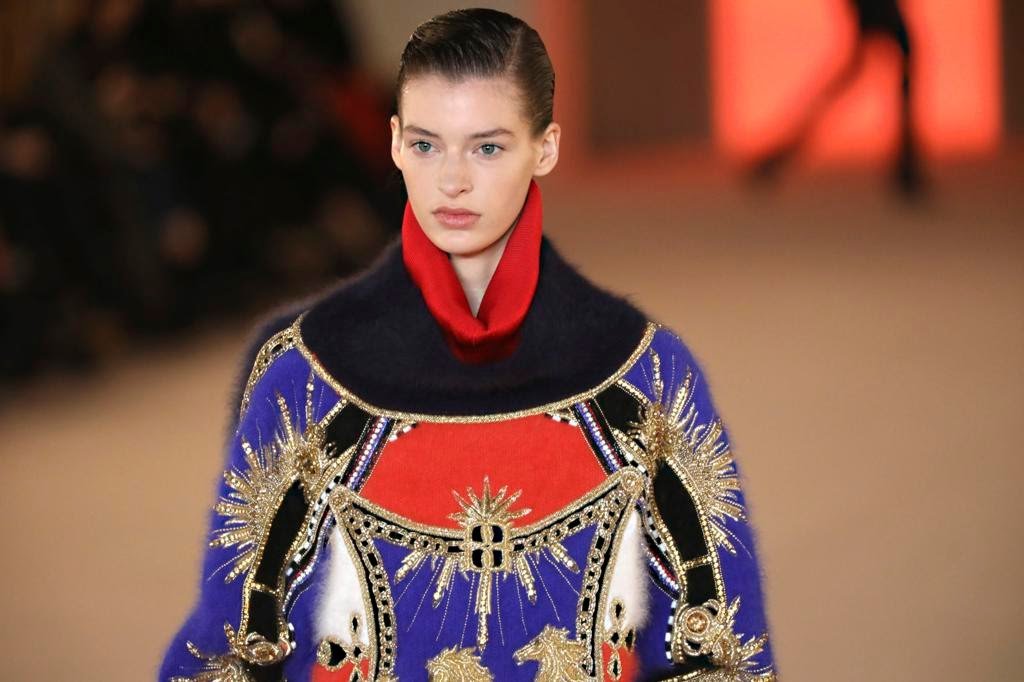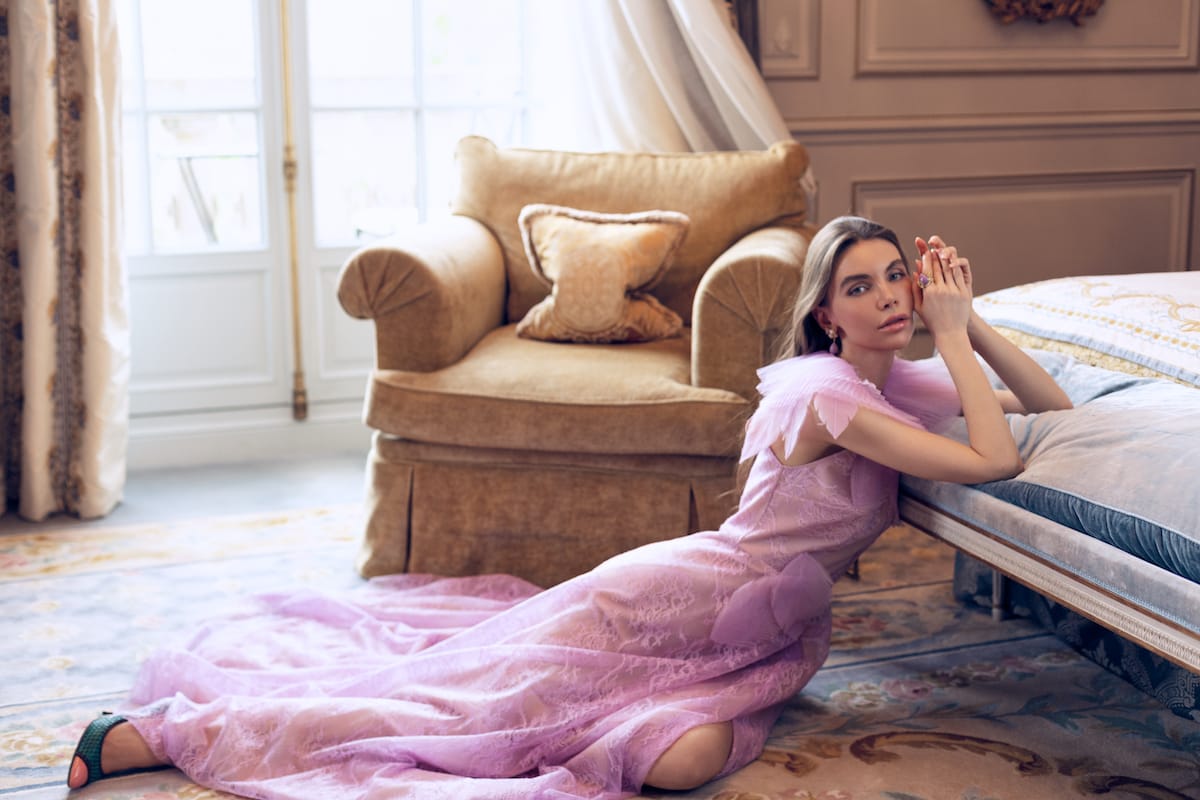Elena Pavlichenko’s travel notes and photographs from the Country of the Rising Sun for Beautiful Lifestyle magazine.
Any trip might be considered pointless unless, apart from the mandatory set of sights, it contains bright impressions, personal evaluations and brings memories later on. After all, a personal image of a country is usually formed by small and comedic instances, encounters with local people, memorable adventures, and even good weather. This matters to anyone, and especially to a woman, I presume. I made my first trip to Japan last spring to take part in hanami, the local tradition of contemplating blossoming sakura trees. The second best season for travelling to Japan is autumn, the time of red maples or momiji. November is the best month to enjoy this crimson spectacle.

Japan mesmerizes starting from the very first minute of the trip. The local people charm their guests with enthusiasm for help. I happened to have left my tablet in the plane and had to consult the lost and found bureau. The airport officials turned out to be happy to help me. They made their best to make me happy. Just a few minutes later they found my beloved gadget, and were even more delighted than I was. A trip starting with lovely attitude is meant to be good all the way through. Everybody is lovely over there. The same morning we saw a family with a beautiful little girl dressed in a kimono: just as we expressed our delight her relatives thanked us for the kind words and offered help. Our Japanese experience started off a major key note.

The Country of the Rising Sun has many sides to it. That is not just a figure of speech, one sees it pretty much everywhere: exquisite parks combine with objects of kitsch design, deep literature complements straightforward playwriting, the people responsible for creating the world’s top-notch technologies spend their free time the way their grandfathers used to, while houses filled with robots still respect ancient traditions. This contrast is both surprising and inspiring. Japan is never boring.
Every moment brings something new and exciting. For instance, I decided to try some Japanese wine. The bottle looked respectable: the label had the grape variety, the geographical denomination, and the terroir on it. However, it tasted more like apple cider vinegar. I restrained myself from ordering some honey or maple syrup to go with it. Still, it was an interesting experience.

Buson
Blown by western winds to the east suffering fallen leaves
Today we are going to the mountains to see treks, lakes, cableways, and the famous thermal keys known locally as onsen. Spring brings thick patches of fog over the lakes giving the area a mysterious look. It looked magical. The only downside was, we could not see Mount Fuji.
Hakone is a silent ancient volcano. Its caldera contains the summits of several younger volcanos some of which still puff out ashes from time to time. The caldera also houses Lake Ashi which is believed to be Mount Fuji’s mirror, a marvelous park, the temple of Kuzuryu the nine-headed dragon, endless ochre grass field with silhouettes of mountains in the distance.

Japan like no other country showcases the ambiguity of the world. Back in my youth I was amazed by a short story by Akugawa where a single event told by four different characters acquires a whole new meaning. Over here one gets a better understanding of that the impression depends on the inner state and the travelling partner. A good trip is like unimpeded breathing that helps you explore the world.
Hakone, morning, birds, water, fog, silence, and a wide palette of natural colours — all of it mesmerizing. We head to Jigokudani or Hell Valley, home to smoking volcanic hydrosulfuric keys. I even managed to take a photograph of a flock of birds above Mount Fuji. Sadly, the morning was marred by a tsunami warning in the tragedy-stricken Fukushima some 200 miles away from where we were. Here in the mountains we were not likely to be hit by a giant wave.
The temple of Kuzuryu or the nine-headed dragon above Lake Ashi is a part of the shintoist Hakone shrine. It was founded in 757 AD and is dedicated to the soul of the nine-headed dragon dwelling on the lake floor. The shrine stands in middle of an ancient Japanese cedar grove. The shrine and the lake are connected with stairs headed by a colossal red gate (tori) known as the “Dragon’s gate” or the “Gate of the world”. The names originate from the legend of a horrible dragon who kidnapped the most beautiful young ladies. A Buddhist monk named Mangan captured the dragon and chained him to a tree on the bottom of the lake. Imprisoned underneath the water, the dragon is believed to be the patron of the area. The legend says the monster often cries as he repents for what he did. His tears make the water of Lake Ashi sacred. The gate stands where the nine-headed creature used to get out of the water.

leaf falling on leaf on mounds of leaves rain splashing in pools of rain
Dragons are an important part of Japanese mythology still revered by the nation. They are believed to be the most powerful creatures after the gods. Japanese folklore depicts these creatures as wise and beautiful. As opposed to the European dragons the Japanese ones are slender and wingless, while their heads look more like those of horses albeit with large whiskers, two long horns and no ears. The dragons love playing with clouds causing rainfall and hurricanes. The dragons cherish pearls and are always ready to go extreme lengths to get their paws on a rare pearl. Legend has it, there is a high waterfall up in the mountains.
A carp that makes it all the way up to its summit jumping from one river to another turns into a dragon.
Before I was on my way I dreamed of eating just sashimi for ten days and losing a lot of weight. However, we have been eating buns and noodles for the past three days, and raw fish is nowhere to be seen. An authentic Japanese breakfast (we are staying at a hotel almost exclusively reserved for the locals) turned out to be a tough test to pass, and the only two things I could go through were croissants and bacon. The pounds which left so stubbornly came back. Long treks in search for natural beauty are not helping either.

The leaves of ivy – all of them quiver in the autumn wind
While you are travelling you are likely to run into sights strictly made for stripping tourists off their money. It still might be valuable for the local people but barely understandable for foreign tourists. However, the latter are still storming these locations paying extortionate fees to get there just to leave with a disappointment. I call these trips “a fool’s fee”. There is nothing discriminatory in this term, it just means that one pays for their ignorance. It does not matter how many websites one studies, they still might get into a situation like this. Our group was no exception to this. We had grand plans of walking through widely advertised fields of ochre grass and making great photos, visiting a botanical garden on swamplands, and finally enjoying a spa centre with exotic wine-, coffee-, tea-, and sake-flavoured baths with thermal springs. The first attempt was no good. The field turned out to be just a grassy plain with no views or anything exceptionally pretty. The botanical garden that we had a hard time finding blasted by wind had a few puddles, half-derelict flower beds, and cranesbill pots. Maybe it looks pretty in some other time of the year, but most definitely not now.
The spa centre was a funny adventure. A beautiful building with columns which looked somewhat like a Soviet health resort looked promising at the very least. That was an illusion. All we saw were crowds, a few water slides, inflatable swans for the numerous kids, screams, shouts, and a lot of noise. The coveted exotic baths turned out to be little pools filled with brown (alluding to coffee), green (like the tea), light burgundy (presumably wine-flavoured), and white (sake) water. Fifteen minutes later we left this “kingdom”.

Rocks among the cryptomeria! How sharpened their teeth Winter cold wind!
We got stuck in the mountains under heavy snowfall. There was no public transportation, and we had to stay at the hotel sipping on hot cocoa, and processing our photos. However, the following morning I set off to take the pictures I had dreamt of: the Japanese snowcapped landscapes. That was fantastic: pure white snow, branches bending down under the weight of the snow, and snowy paths. Peace and serenity.
In the afternoon we were set free, and headed to the nearest railway station, Odawara. We were in a car with lively Japanese ladies who laughed, then shouted in fear, and got back to laughing at themselves. The views outside the windows were mesmerizing: mountain villages, temples, a dizzying serpentine road, stuck cars…
I have been dreaming of going to Japan’s ancient capital Nara since my first trip to the country. Websites promised there would be beautiful deer freely walking in the park that one could pet and feed special biscuits to. The reality, however, was quite different from the advertising pictures. There were in fact a lot of deer, and they did not just walk in the park, they roamed the entire town. Angry-looking ladies sold the special biscuits. The ever-hungry deer bit and headbutted people and hit them with their hooves. That did hurt. Also, their droppings were everywhere, and we had to keep away from them not to smell.
Nara is famous for its temples. Yesterday we attended a service. A lot of buses brought in people from various places. Before entering the temple the visitors take off their shoes and step in for the ceremony. There are lights, drum sounds, and everyone is praying sat on little floor mats. We followed suit. We did not understand what was going on, but the ceremony did in fact bring a sense of peace and tranquility.

Pine tree silhouette Painted by the Harvest moon On a shining sky
Today we are roaming across Kyoto. This morning we headed to the impossibly beautiful Daigo-Ji temple. To get there we had to get familiar with Kyoto’s underground railway which is logically and conveniently organized. Or at least I thought so. Ten minutes into the ride we realised we should have changed lines, and we wound up in the town of Otsu on the shores of Lake Biwa. This is where the Japanese wit comes in handy. If you missed your station, just adjust your fare at the exit. However, all of the teller machine instructions are written in Japanese, so we had to ask an official to help us out.
The day in Kyoto was not as lucky as we had expected it to be. It is quite troublesome to make a perfect picture when you are surrounded by millions of locals and just as many tourists. We stood for an hour next to the coveted bridge over the pond waiting for a moment when nobody would be around us: mission impossible. Tranquility left me and philanthropy followed suit a moment later. I especially disliked the Chinese tourist clad in an obnoxiously colourful jacket who took pictures from all of the possible angles, then a video, then a selfie, and then he started taking pictures of other tourists. Then I turned around and saw a Japanese photographer with a professional camera who sat on a rock waiting for a perfect moment, and realised I was fantastically calm.
The second temple was surrounded by more tourists, so we figured we had even fewer chances of a good photo and went back to the city for lunch. It was still quite early and we headed to the Kiyomizu-Dera temple. We honestly hoped the Japanese would not consider this time good for taking photos knowing that they never leave home without cameras and selfie sticks. We were wrong. The thick stream of people flowed gently through the only street leading to the temple. That must have been some sort of a celebration, and the entire city of Kyoto went outside. We escaped the crowd and went back home.

The wings of passing birds singed on the red maple leaves
It has been raining in Kyoto since the morning, and we headed towards the Emperor’s palace. I wanted to feel some nostalgia as this was the first spot I saw during my last trip to the city. This is a large park one can walk along for hours occasionally running into another person. This is truly exceptional for Japan. Last time it was raining too, and we were holding umbrellas just like we are now. To put it correctly, we were mostly running around from one spot to another. Trees, leaves, raindrops, rocks, bridges, and lampposts, everything was photographed with a maniac-level obsession. This time we walked instead of running. This was mostly a meetup with the familiar spots. We walked around remembering the things we photographed, the people we met, and remembered the places we made our best snaps at. We were just as happy to recognize the places as we were while seeing them for the first time. This time I mostly looked at people rather than snapping away.
Every time I travel I “appoint” my favourite people among those I run into. This time I picked two couples. The first ones were an elderly Chinese couple who came over with their adult children. The husband kept hugging his wife while she was wearing a polyethylene hat and yanking it off when the children were making a photo. The woman had such a wonderful smile that it was clear why the husband could not take his eyes off of her. The second couple looked more like revolutionary anti-capitalist comrades. My impressions might seem weird but this is what I thought when I saw the woman’s steps with her boots and a red umbrella, their quick exchange of words, and a quick transition to a new cultural spot. They did not hold hands; there was no sign of affection or tenderness whatsoever. Only when he carefully adjusted her collar some sort of feeling was visible.
I confess that this time Kyoto brought different feelings and emotions. It feels good to know your way around the city, to have favourite places and restaurants, not to get lost, and to remember where the best sweets are sold. It feels even better to be remembered and greeted at the restaurant you came to last time. I have to say that despite my love for the Japanese cuisine this time we only ate at Italian restaurants and had breakfast at Starbucks. That’s what happened to our culinary preferences. Still, Kyoto charms best with its temples, people, and the river.

To wrap this story up let me put down some of my random thoughts about the trip. The second trip to the magical country was just as good as the first one. Some countries look different than they did during your first trip over and do not feel as good. This was my impression of Jordan. However, Japan lived up to the expectations. I still enjoyed the country itself, its nature, and its people. I want to come over one more time, only next time I would need to rack up courage and drive across the whole country.

Japan strikes with its tranquility, intelligence, and comfort. Rules and systems are easy to understand. Comfort and happiness are the two feelings you experience first. And then there is beauty. Beauty in everything, temples, parks, houses, food, trains, bento lunchboxes, the list goes on. I also love the Japanese people’s attitude toward their home country, namely respect and admiration. When they come to temples and parks they mostly take selfies, but the natural beauty on the backdrop still plays the main role. This is photographer’s heaven. However, I need to say that I mostly take pictures of the environment; temples and parks are less appealing to me.
There is a great deal of mutual respect. If two people bump into each other both start apologizing, and they mean it. The desire to help one another just comes natural them, I believe.
There are unbelievable sweets. I am not a fan of sweet pastry and chocolate but the Japanese ones are so good I just could not resist. I even took some of them home. We are going back home hoping to return some other time.
Written by Elena Pavlichenko






